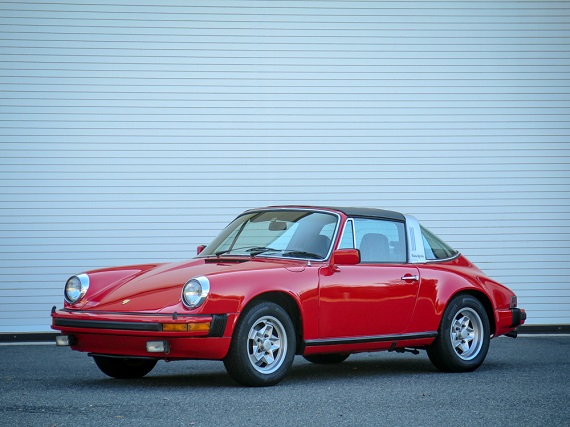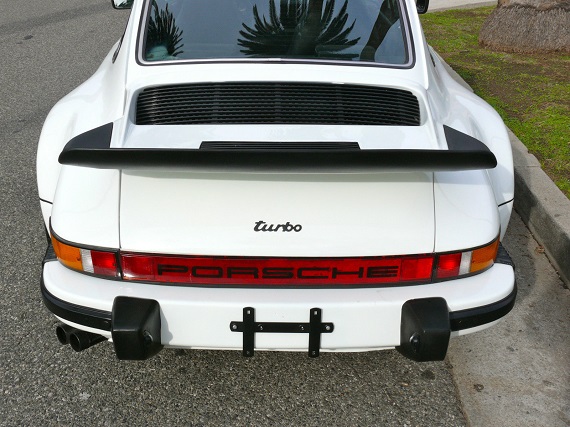The 1974 Carrera is one of those 911s that I enjoy spending some time lingering over the details. As the first to sport the redesigned body it’s interesting to get a sense of how Porsche chose to transition from the beloved long-hood 911 to these with impact bumpers, especially when we consider that the basic shell of this design would be with us for another 15 years. There are a lot of interesting touches on these cars, from the Carrera side graphics with color-matched wheels to the use of the ducktail rear spoiler, that set them apart from other mid-year 911s. The 1974 models tend to show the most value of the 911s produced from 1974-1977 and the Carrera is the only model that’s shown the ability to compete in value with a long-hood 911. The example seen here is a restored Grand Prix White 1974 Porsche 911 Carrera 2.7 Coupe, located in Georgia. The listed mileage is 1,974 miles, which I presume is the miles traveled since it was restored.
Author: Rob
While many of the 911s we feature here at GCFSB fall into the category of excellent condition, low mileage, and original examples, which typically come with a fairly high price tag, we also strive to find interesting driver-quality examples as they come across the market. Cars reflecting a high degree of care from their owners, but which also may possess a mechanical issue here and there or issues with their originality. And while the museum-quality collectors are always neat to see, it is the drivers that really grab our attention. These are cars with personal histories that have spent significant time doing precisely what they were intended: being driven. For that alone we love them. The car featured here appears to fall into just such a category: a Guards Red 1979 Porsche 911SC Targa, located in North Carolina, with 102,250 miles on it.
CLICK FOR DETAILS: 1979 Porsche 911SC Targa on eBay
1 CommentFollowing from yesterday’s early Porsche 930 here we have an example from the other end of the spectrum: a Silver Metallic 1989 Porsche 930, located in California, with 51,300 miles on it. 1989 marked the other significant point in the 930’s evolution as Porsche finally fitted the car with a 5-speed manual transmission in place of the 4-speed that had been standard throughout the model’s life. Oh, and it was the last year of the 930’s production. That makes these models highly regarded on the collector market and, as we can glean from the asking price here, quite a bit more valuable than some of the preceding years. It is these two ends of the 930 spectrum, the early 3.0 liter cars and the final year G50-equipped cars, that are commanding the most value these days and it has been interesting to compare the relative values of each. 1989 signaled the end of an important era for Porsche, and the 911 in general, as the cars produced over the previous decade had cemented the long-term viability of the 911 within Porsche’s ranks. It would also be the same year the 964 was introduced, a model that propelled the 911 forward and brought with it significant changes. As a way to say goodbye to the classic 911 design, the 5-speed 930 made for a nice departure.
CLICK FOR DETAILS: 1989 Porsche 930 Coupe on eBay
Comments closedAn early Porsche 930 is a truly special vehicle, not just for its sheer performance but for its development and ultimate showcase of what Porsche was capable of producing. While initially intended to follow in the footsteps of the Carrera RS as a lightened 911 designed to meet homologation requirements, plans for the 930 shifted as those requirements changed and the car became an opportunity for Porsche to produce a car that melded a high degree luxury with blistering performance. Porsche could now compete with the likes of Ferrari. During the early years, from 1975-1977, the 930 changed little featuring a turbocharged 3.0 flat-six mated to a 4-speed manual transmission. The greatest change then came in 1978 when displacement was increased to 3.3 liters and an intercooler was integrated into the redesigned spoiler. My preference, purely from an aesthetic point of view, has always been for the 3.0 liter cars for the simple reason that the whale tail fits the lines of the car almost perfectly, while the tea-tray of the 3.3 liter cars looks slightly clunky. It’s a minor difference, but one that always stands out to me. The example here comes from that early 3.0 liter period: a rare sunroof delete, European, Grand Prix White 1977 Porsche 930, located in Los Angeles, with 21,787 miles on it.
CLICK FOR DETAILS: 1977 Porsche 930 on eBay
3 CommentsWhile wide-body 911s have always been popular the design seems to have really hit its stride with the 993 and every iteration that has followed has looked tremendous with those wider rear fenders. Don’t get me wrong, the earlier turbos and other special 911s looked quite good as well, but once the 911 took on the curvier shape of the 993 that wider rear began to look just right. I’d even hazard to say that the narrow-body cars now look slightly out of place; they’re too slim. The Carrera 4S showcases those extra curves extremely well while providing the added benefit of all-wheel drive to help keep things moving in the intended direction. As with most 993s the market has remained strong for these cars, especially in colors we come across less often like this Aventurine Green Metallic 1996 Porsche 911 Carrera 4S, located in Connecticut, with 58,009 miles on it.




